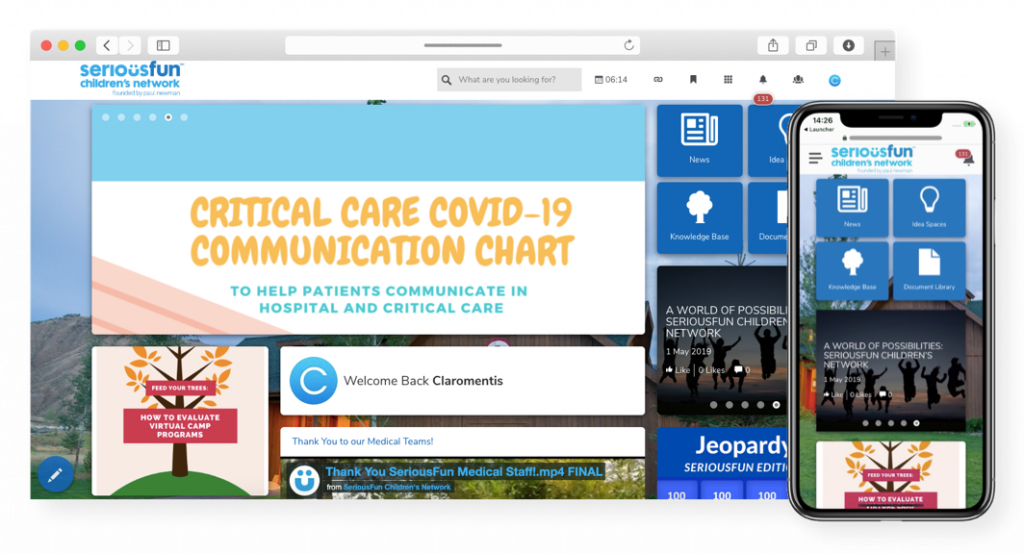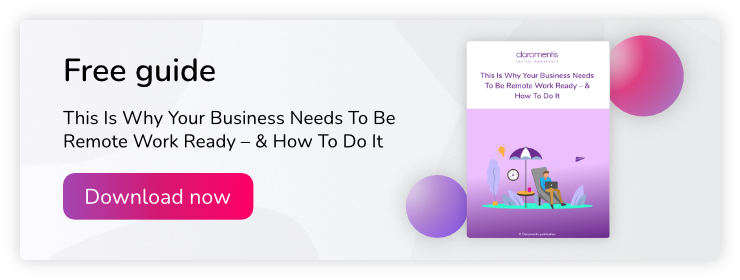As remote working and the need for digitization continues to proliferate, organizations are becoming ever more aware of the benefits of digital communication in the workplace.
Better digital communications channels are just one aspect of the huge acceleration of digital transformation initiatives over the past two years or so – seven years’ worth in a matter of months, according to some observations.
But are we really seeing the full benefits of digital communication at the moment?
In many cases, adoption of digital communications channels is partial, with some areas of the business benefiting while others are ignored. In other cases, the adoption of modern digital communications tools has been seen as a temporary measure to weather recent workforce disruptions before a mass return to the office.
Yet it’s in the long-term that the most significant benefits of organization-wide adoption of digital communication tools reveal themselves. The right implementation of digital communication channels creates flexible, engaged and resilient workforces in the organizations that implement them.
What do we mean by digital communication?
Digital communication is simply any communication between employees that happens using online tools.
Digital communication includes the communications that take place via:
- Instant messaging
- Online productivity tools
- Company intranets
- Employee discussion forums
- Intranet apps
- Videoconferencing software
- Digital whiteboard tools
- Social media
Most businesses will use at the very least, two or three of these channels across various parts of their operations. Yet, digital communication is by no means universal – thousands of workers up and down the country still rely on physical notice boards and both formal and informal meetings to keep up to date.
This partial adoption of digital communication causes knowledge silos, poor employee experiences and, for some workers, unnecessary restriction to traditional working patterns. Below, we explore the advantages of adopting digital communications channels across all corners of your business to increase employee satisfaction, productivity and efficiency.
The advantages of digital communication in the workplace
1. More efficient internal communication
Instant messaging apps and publishing platforms like internal intranets get messages across to individuals, teams and departments faster than anything else.
When compared to traditional methods – employee notice boards or daily meetings, for example – the difference is stark. Digital communication tools get important messages, updates and information out to the whole workforce instantly – and are especially effective when using smartphone-friendly channels with push notifications enabled.
Mobile and social intranets even beat email in efficiency. The issue with email is that it’s oversaturated. According to one recent survey, 25% of employees spend the equivalent of one working day each week managing their inboxes.
If you rely on email as your sole method of digital communication, your messages will arrive instantly, but may be piled under so many other messages that they get ignored, skimmed over, or deleted.
So, whether you’re issuing a major company update, rearranging shifts for your team, or recognizing great performance, consider modern digital communication tools as your first port of call.
2. Easier knowledge transfer across your business
One of the biggest issues that businesses face when developing their workforce is that useful knowledge is often siloed into different departments or sections of the organization.
In other words, one team might have useful insights to share with another team, but because those teams don’t interact, this never happens. Knowledge is never combined, and all the potential benefits are lost.
Using online discussion spaces connected to an intranet allows people across your business to share expertise, experience and best practices across locations, teams and departments. This helps your employees develop, and the quality of service grows as a result.
Take a look at how holiday camp company Serious Fun built their own intranet for this exact purpose.

(Source: claromentis.com)
Worried that experience and best practices were being siloed into different camp locations, they implemented a ‘funtranet’ with dedicated knowledge forums where staff could share their knowledge with others across the country. This increased interaction and knowledge sharing across different camp locations, with a stronger, more confident workforce as a result.
3. Adoption of new ways of working
Digital communication channels can completely open up new ways of working for some employees. This can help you attract and retain top talent that can be a real asset for your business.
According to a recent survey by Fujitsu, only 18% of employees want to return to the office full time after the recent bout of remote working. Full remote or hybrid working is now becoming a huge draw for employees – and one of the main benefits of digital communication is that it can make this a workable reality for your business.
It’s vital to go beyond the basics here – despite having access to email, 62% of UK homeworkers said that they lacked the technology to communicate effectively with their organization and their co-workers.
Videoconferencing and digital whiteboard tools allow your employees to collaborate effectively whilst working remotely. Meanwhile, mobile intranets and chat tools increase employee engagement and allow them to feel like part of the team – a vital part of maintaining high performance levels across locations.
4. Enhanced employee experience for different groups
The issue with traditional internal communications tools like email is that they only work for some parts of your employee base.
This creates a work environment which is welcoming for some of your workforce (office-based teams with 24/7 email access) but alienating for others – namely frontline and mobile teams who can’t read the latest newsletters or announcements as they come through.
It’s difficult to keep these employees engaged, so service levels drop and you’re likely to see frustrating levels of employee churn.
Using mobile-friendly digital communications tools opens up a world of possibilities here. If you can send updates to employees’ smartphones via intranet app push notification, everyone receives key news at the same time.
This helps create a sense of belonging in every corner of your workforce, and provides an inclusive employee experience that increases engagement across your business.
5. Improved workplace resilience
Being able to reach your entire workforce instantly – and for employees to be able to work in locations that aren’t your work premises – gives you a huge degree of resilience in the event of unforeseen circumstances.
Digital communication isn’t just something to keep in place in case of a global disaster. In many cases, it can keep employees productive in the case of everyday issues like:
- Low-level colds (employees can work remotely to stop the spread)
- Childcare commitments (for example, flexible working during school holidays)
- Issues with working premises (for example, office inaccessible due to a power outage)
- Poor weather conditions that make commuting dangerous
Overall, digital communications tools help you create a flexible and adaptable workforce that can maintain productivity in the event of both global and day-to-day disruptions.

![[FREE GUIDE] This Is Why Your Business Needs To Be Remote Work Ready – & How To Do It](https://no-cache.hubspot.com/cta/default/5025095/2fe668ae-fee5-486f-8c8a-79a6da716731.png)




